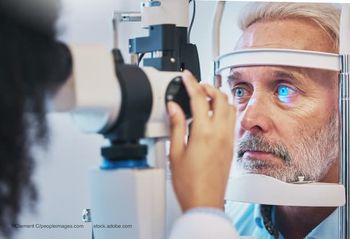
Joint initiative focuses on value of patient input for MIGS therapy
Project involves development of patient-reported outcome measure
A collaborative effort among the FDA, bicoastal Centers of Excellence and Regulatory Science and Innovation (CERSI), and the American Glaucoma Society (AGS) has completed a project to determine patient preferences in glaucoma treatment with a focus on minimally invasive glaucoma surgery devices.
Reviewed by Malvina Eydelman, MD, and George L. Spaeth, MD
IN 2013, the FDA launched a collaborative project that recognized the value of including information from glaucoma patients in the agency’s evaluation of
Speaking at the AGS meeting in March,
“We, at the FDA, believe that patients’ input can and should inform medical device development and evaluation throughout the product life cycle,” said Dr. Eydelman, director, Division of Ophthalmic, and Ear, Nose and Throat Devices, Center for Devices and Radiologic Health,
“Along with that concept, we published two guidance documents defining how patient preference information and patientreported outcomes can be utilized to assess the safety and effectiveness of
“We have been fortunate to obtain funding from the FDA to allow collaboration between the bicoastal CERSI in this program and to work with the AGS that has been a significant contributor since the project’s inception,” she added.
RELATED:
What patients want
Citing a passage from the Hippocratic Oath and from an article titled “
As a matter of fact, the idea that physicians may be required to base actions on patient-reported outcomes is one of the most frightening things that comes to mind for physicians,” said Dr. Spaeth, who has participated in the collaborative project as a representative of the AGS and is the Louis J. Esposito Research Professor,
“However, it is time to start thinking about what patients want and what is important to patients,” he said. “If we say that we ought to do MIGS because it results in better patient outcomes, this project will for the first time give us information able to support that statement. It is both enormously exciting and terribly important.”
RELATED:
Status update
The completed project, which was being conducted with the collaboration of the
“The manuscript has been submitted for publication, but to highlight some of the interesting outcomes, we found that control of IOP mattered most to patients whereas the reduction in number of drops used was very low on the list,” Dr. Eydelman said.
The second project, which involves the
The process for developing the survey tool involves seven phases, of which six have been completed. First, a physician focus group was convened followed by several patient focus groups with the goal of gathering additional information that was used to develop the questionnaire.
Next, cognitive interviews of item content were conducted, and a web-based PROM was developed. Then, there was a second round of cognitive interviews, and the information gathered was used to refine the PROM. Now, the modified PROM, is ready for testing at sites throughout the United States.
RELATED:
“The last step in developing this health-related, quality-of-life measure is a field test where patients with mild-to-moderate glaucoma will complete the survey online to assess the questionnaire’s reliability, validity, and responsiveness to treatment,” Dr. Eydelman said.
As “breaking news,” Dr. Eydelman announced that the
At the AGS meeting, Dr. Eydelman put out a call for meeting attendees to become involved as investigators. Glaucoma practitioners who may be interested in being considered as investigators for field testing of the PROM should express their interest via e-mail (
“We need your help to incorporate patient perspectives into the development and evaluation process that informs innovation for MIGS devices,” she said.
RELATED:
Disclosures:
Malvina Eydelman, MD
E: [email protected]
Dr. Eydelman has no financial interests to disclose.
George L. Spaeth, MD
E: [email protected]
Dr. Spaith has no financial interests to disclose.
Newsletter
Don’t miss out—get Ophthalmology Times updates on the latest clinical advancements and expert interviews, straight to your inbox.



















































.png)


